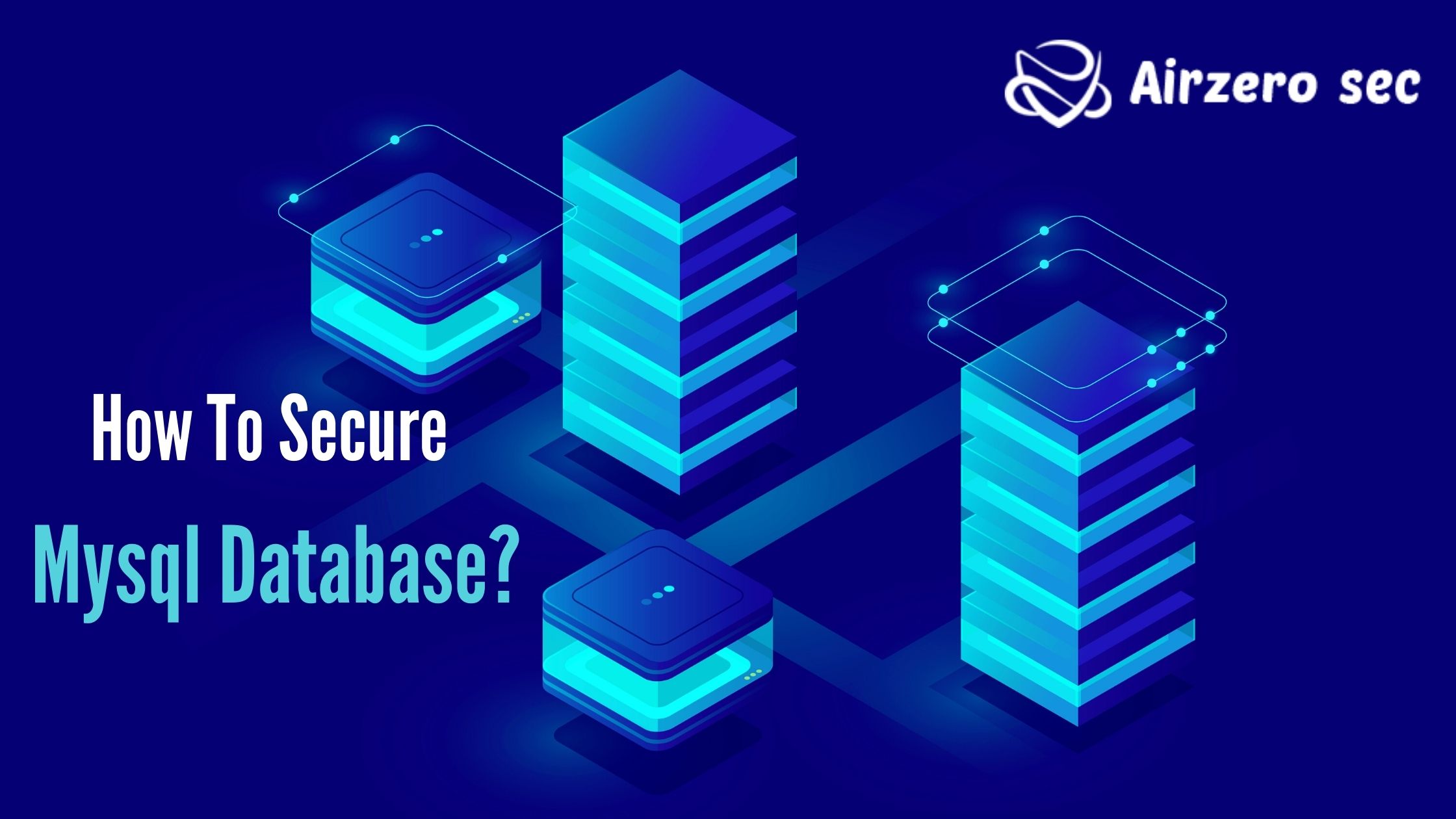
The most valuable and prominent asset for technology-based companies is usually the user or product information in the database. And so, a critical part of database administration in such companies consists of securing or making these databases safe against outside attacks and hardware or software failures.
How to Improve MySQL Database Security?
In the majority of cases, hardware and software failures are handled through a data backup immediately. Most databases come with types of equipment to automate the whole process, making this aspect of the work relatively painless and error-free. That is not so simple, however, in the second half of the game, making sure that external attackers can't get into the system and either steal or destroy the information contained there. And unfortunately, there usually isn't a correct way to solve this problem. rather, it requires you, the administrator, to manually put in place roadblocks and obstacles to trip up would-be hackers and to ensure that your company's information stays secure.
A common reason for not securing databases is that it is "most difficult" and "more complicated". While this is certainly true, if you're using MySQL, there are some easy things you can do to significantly reduce the risk of security.
Best Ways to Improve MySQL Database Security:
- Drop the test database
- Remove all unknown accounts
- Change the default port mapping
- Altar the hosts have access to MySQL
- Do nor run MySQL with root level privileges
Here we Explain MySQL Database Security Best Practices:
- Drop the Test Database:
The test database installed by the MySQL Server package as part of the mysql_install_db process can be fully accessed by all users by automatic, making it a common target for hackers. It should therefore be deleted during post-installation hardening. - Remove All unknown Accounts:
MySQL by default builds several unknown users that essentially serve no need after installation. These accounts should therefore be deleted, as their presence on the system gives hackers an entry point in the database. - Change Default Port Mappings:
MySQL runs on port 3306. This should be changed after installation to obfuscate what services are running on which ports, as hackers will initially attempt to exploit default values. - Alter Which Hosts Have Access to MySQL:
If built as a standalone server, MySQL should be configured to only access some permitted hosts. This can be fulfilled by making the appropriate changes in the hosts. deny and host the files. - Do Not Run MySQL With Root Level Privileges:
MySQL should be working under a specific, newly-built user account with the exact permissions to run the service, as opposed to straight as the root user. This will help with some auditing and logging benefits while preventing hackers from gaining access by hijacking the user account.
How To Remove Wildcards In The Grand Tables?
The MySQL accessing control system works through a series of so-called grant tables, which make it possible to explain access levels for each user at the database, table and column level. While these tables do access administrators to set blanket instructions for a user or set of tables using wildcards, doing so is inherently terrific because an attacker could use a single compromised account to gain access to other parts of the system. For these types of reasons, be precise when accessing users’ privileges and always ensure that users have only as much access as they need to perform their acts. In instantly, be wary of assigning the great privilege to individual users, as this level allows users to change basic server configuration and access all databases.
How To Require The Use Of A Secure Password?
User accounts are only as secure and safe as the passwords used to protect them. For this reason, the very first thing you should do when you download MySQL is assign a secure password to the MySQL root account. Once you've closed this hole, the next step is to require that every user account must have a secure password and ensure that safe passwords do not use simply-understandable heuristics such as birthdays, user names or dictionary words.
How To Check The Permission Of Configuration Files?
Simply often, to make server connections speedy and more convenient, both users and the server administrators store their user account passwords in their single-user MySQL options file. However, this password is stored in the normal text within the file and can easily be gotten. Therefore, it's important to ensure that such single-user configuration files are not seen by other users of the system, and are stored in private locations. Importantly, you'd want the single-user configuration to be stored in the user's home directory with permissions.
How To Encrypt Client-Server Transmission?
A most important issue in the MySQL client-server architecture involves the security and safety of data being transmitted over the network. If client-server transactions take place in plaintext, it is possible for a hacker to attack the data packets being transmitted and thus lead access to private information. You can close this hole either by enabling SSL in your MySQL by using a secure shell utility like OpenSSH to create a secure and safe encrypted for your data to run through. Encrypting your client-server connection in this manner makes it very hard for undesired users to read the data going back and forth.
How To Disable Remote Access?
If the single users don't need to access the server locally, you can drastically reduce the risk of a network attack by forcing all MySQL connections to take place through the UNIX socket file. This is accomplished by running the server with the --skip-networking option. Doing this blocks TCP/IP network connections to MySQL and makes sure that no user can remotely connect to the system.
How To Actively Monitor The Mysql Access Log?
MySQL comes with a number of various log files, which keep track of client connections, queries and server errors. Of these, the most important is the common query log, which logs each client connection or disconnection with a timestamp, and also records each query made by a client. If you suspect unwanted activity, such as that associated with a network destroying attempt, it's a good thought to monitor this log to gain an understanding of the source of the activity.
Protecting the MySQL databases is always a time to time task, and so you shouldn't be at peace easily once you've done the steps above. Be super active in monitoring and updating the security of your system with cyber security consulting services provided by AirZero sec.
If you need MySQL database security services, and consultations against these serious cyber security attacks, feel free to contact us. AIRZERO SEC will be your strong digital security solution. E-mail id: [email protected]

Author - Johnson Augustine
Ethical Hacker and Data Security Researcher
Founder: Airo Global Software Inc
LinkedIn Profile:
www.linkedin.com/in/johnsontaugustine/
